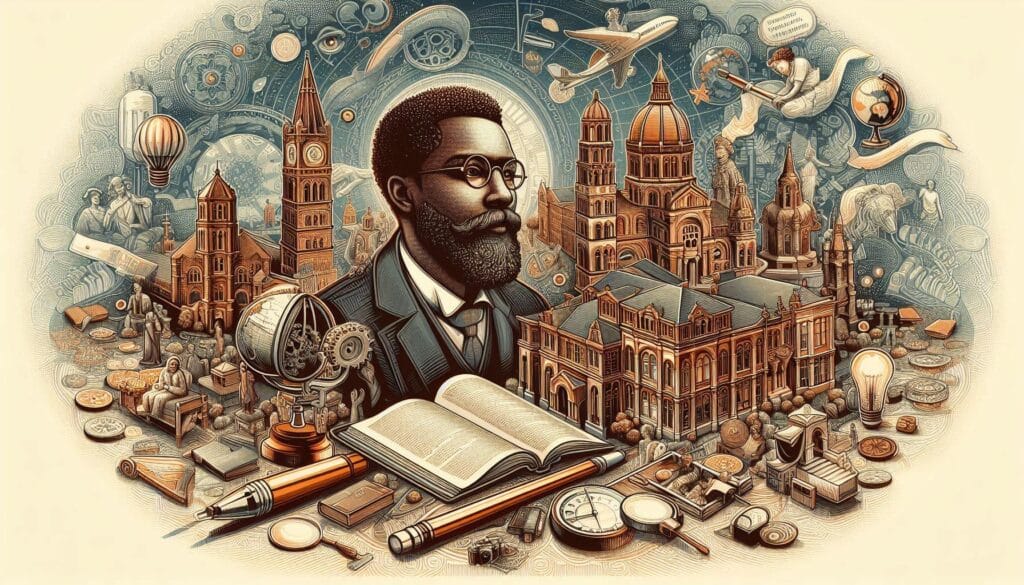Despite the recent attention paid to tourism and education as industries, travel for learning and education is not a new concept. Travelling in search of either academic qualifications or broad general learning and observation predates our times by several centuries.
Smith and Jenner (1997a) suggest that tourism broadens the mind, and thus all tourism may be considered educational. However, they acknowledge that there are smaller, more identifiable market segments within the broad educational tourism field.
Nevertheless, Smith and Jenner (1997) note that the concept of travel for education and learning is a broad and complicated area, which explains why tourism academics and industry have to date primarily ignored this field.

The Grand Tour was the beginning of cultural and educational tourism, undertaken initially by scholars and aristocratic British youth as part of their education during the seventeenth, eighteenth and much of the nineteenth centuries (French et al., 2000; CTC, 2001).
The purpose behind the Grand Tour was to teach and civilise participants through a series of study tours lasting up to several years in European destinations such as France, Switzerland and Germany. Participants were taught foreign languages, fencing, riding, dancing, and foreign affairs.
Visiting continental universities and other aristocrats, accompanied by an entourage of tutors and servants, was commonplace during this time, especially for emerging English scholars.
As Hibbert (1987) notes, ‘there were few English scholars of the time who did not go to Italy for some part of their education’. In fact, scholars were one of the first groups of tourists, and as Kaul (1985 in Theobold, 1998: 7) notes, ‘the English, the Germans, and others, travelling on a grand tour of the continent, came to be known as tourists’.
As Towner (1996) correctly states, from very early on, travel for education and learning could take place either formally or informally depending on individual motivations and the type of experience demanded.
He suggests: the spatial patterns of the Grand Tour passed through two stages; from a quest for a formal acquisition of practical training and social skills at specific educational centres to a broader and more informal social and cultural education that was best attained at the main courts and social and artistic centres in Europe.
However, the cost of undertaking the Grand Tour was not economical at this point in history. Despite this, participation moved over time from being solely an activity of the upper class and wealthy elite to the bourgeoisie and later to the lower class and mass market.
Furthermore, due to a reduction in available time and money, the bourgeoisie and lower class had to shorten their trips, and hence activities and the number of destinations and settings visited were intensified, leading to an increase in more general sightseeing, and, therefore more informal learning through travel.
By the mid-eighteenth century, an estimated 15,000 to 20,000 British tourists travelled abroad. As the destinations of the elite changed in order to avoid the mass market, so interest in and visitation to alpine regions increased.
The latter phases of the Grand Tour in the eighteenth and early nineteenth centuries contributed to the discovery of the Alps, which were avoided during the earlier periods of the Grand Tour, resulting in an increased scientific interest in the mountains.
An increase in travel to the Alps for educational purposes resulted in many mineralogical, geological and geomorphological discoveries, which were made public through guest lectures and publications in scientific journals and periodicals.
According to Burkart and Medlik (1981), following the initial travel for education and learning, travel existed to satisfy travellers’ curiosity about the way people lived at home and abroad.
In later years, the tradition of the educational value of travel facilitated the development of study abroad as a legitimate component of tertiary education in Europe and later the United States (Kalinowski & Weiler, 1992).
Education and learning has more recently become an increasingly important and recognised component of travel activity and travel experiences (see CTC, 2001), with an increasing amount of tourist activity involving some form of either formal or informal education and/or learning.
Despite this, little research has examined educational tourism or the links between tourism and learning/education and various educational tourism market segments.
Educational tourism has been discussed by very few tourism academics. The major discussion of this form of tourism was undertaken by Kalinowski and Weiler (1992) and more recently by Wood (2001).
However, both Kalinowski and Weiler (1992) and Wood (2001) have taken
perhaps a narrow view of this form of tourism by discussing primarily
adult extension programmes or adult study tours and cultural educational
tourism.
As the Canadian Tourism Commission (2001) note, educational
or learning forms of tourism can be viewed along a continuum ranging
from ‘general interest learning while travelling’ at one end to ‘purposeful
learning and travel’ at the other